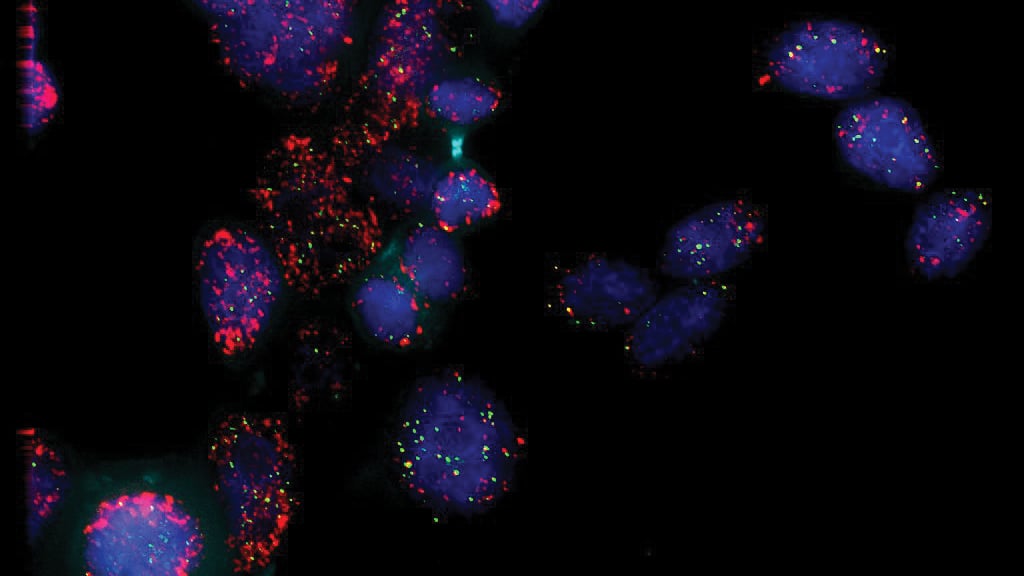EMBARGOED FOR RELEASE UNTIL 4 P.M. ET, WEDNESDAY, JUNE 26, 2024
People with chronic migraine who overused pain medication had fewer monthly migraine and headache days and fewer days using pain medication when taking the migraine prevention drug atogepant.
“There is a high prevalence of pain medication overuse among people with migraine as they try to manage what are often debilitating symptoms,” said study author Peter J. Goadsby, MD, PhD, of King’s College London and a member of the American Academy of Neurology. “However, medication overuse can lead to more headaches called rebound headaches, so more effective preventive treatments are needed. Our findings are encouraging, suggesting atogepant may help reduce the need for pain medication among people with chronic migraine.”
The study involved 755 participants who had chronic migraine, defined as having 15 or more headache days per month with eight or more qualifying as migraine.
Of this group, 66% met the criteria for medication overuse defined as taking pain medications such as aspirin, nonsteroidal anti-inflammatory drugs (NSAIDs) or acetaminophen for 15 or more days in a month, triptans or ergots for 10 or more days a month, or any combination for 10 or more days.
At the start of the study, average monthly migraine days ranged from 18 to 19, and average monthly pain medication days ranged from 15 to 16.
For 12 weeks, participants were either given 30 milligrams (mg) of atogepant twice daily, 60 mg once daily, or a placebo. Atogepant is a calcitonin gene-related peptide receptor antagonist, or CGRP inhibitor. CGRP is a protein that plays a key role in starting the migraine process.
Participants recorded their migraines and headaches in an electronic diary, noting characteristics including duration and intensity, whether they experienced aura or nausea, and if they took other medications.
Researchers found for participants with medication overuse, those taking atogepant twice daily had an average of three fewer migraine days a month and three fewer headache days when compared to those taking placebo. Those taking the drug once a day had two fewer migraine days a month and two fewer headache days compared to placebo. Both groups also had three fewer days of taking pain medications to treat their symptoms when compared to placebo. Researchers say similar reductions were found among participants without medication overuse.
In those with medication overuse, 45% of those taking the drug twice daily and 42% of those taking it once a day had a 50% or more reduction in average monthly migraine days compared to 25% taking the placebo.
The number of people meeting the criteria for medication overuse also declined by 62% among those taking the drug twice daily and by 52% among those taking it once a day.
“Based on our findings, treatment with atogepant may potentially decrease the risk of developing rebound headache by reducing the use of pain medications,” said Goadsby. “This could lead to an improved quality of life for those living with migraine.”
Goadsby noted more studies are needed to evaluate the long-term safety and effectiveness of atogepant, as well as to assess the potential risk of medication overuse relapse among people with migraine.
A limitation of the study was that participants recorded their headaches and medication use in electronic diaries, so it is possible some participants may not have recorded all information accurately.
The study was funded by AbbVie, the maker of atogepant. Goadsby reported that he received personal fees from AbbVie during the study.
Learn more about migraine at BrainandLife.org, home of the American Academy of Neurology’s free patient and caregiver magazine focused on the intersection of neurologic disease and brain health. Follow Brain & Life® on Facebook, X and Instagram.
When posting to social media channels about this research, we encourage you to use the hashtags #Neurology and #AANscience.
The American Academy of Neurology is the world’s largest association of neurologists and neuroscience professionals, with over 40,000 members. The AAN’s mission is to enhance member career fulfillment and promote brain health for all. A neurologist is a doctor with specialized training in diagnosing, treating and managing disorders of the brain and nervous system such as Alzheimer’s disease, stroke, concussion, epilepsy, Parkinson’s disease, multiple sclerosis, headache and migraine.
For more information about the American Academy of Neurology, visit AAN.com or find us on Facebook, X, Instagram, LinkedIn and YouTube.


